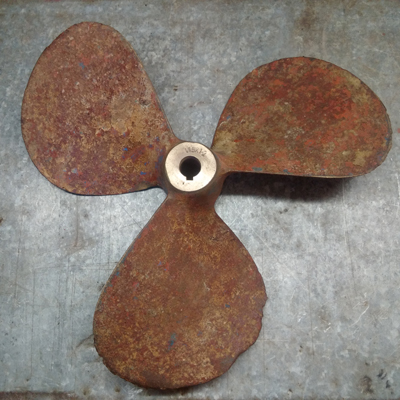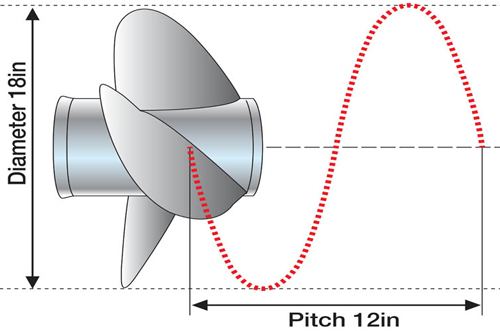
We're working hard in the Sanstec workshop at the moment on various internal projects relating to our interests, technical exposure and engineering know how. In amongst these are a number of ongoing marine and general boating commitments, some of which have meant that we have both deliberately and inadvertently, in some cases, accumulated a reasonably large selection of 'unwanted' hardware (more about that later in some upcoming content).
Whilst sorting through a box of inboard marine engine bits the other day that we are clearing out, one item particularly caught my attention, especially when I tried to pick it up. It was a large 3 blade propeller of a brass appearance (the material actually is more than likely an alloy rather than a pure metal, something else to discuss another time!).
At 15" in effective diameter it's quite a weighty thing, which got me looking and thinking about what shaft it would have been fitted to and subsequently what engine, (i.e. power source), would have been on the end of the shaft, via the gearbox obviously, to drive it effectively so the boat would get going and continue to keep going properly.
The relationship between the propeller diameter and pitch for 'marine and boat' propulsion are important ones for lots of reasons. The detailed technical aspects of which are discussed and considered in a number of other places with various companies when making a selection for your boat/boat engine design.
 We'll be making reference to a number of these design and engineering
aspects in later discussions, but for now what struck me was the
similarities between how the general design and development process compares
to this when considering applying the right amount of effort to gain the
right amount of forward momentum.
We'll be making reference to a number of these design and engineering
aspects in later discussions, but for now what struck me was the
similarities between how the general design and development process compares
to this when considering applying the right amount of effort to gain the
right amount of forward momentum.
Not enough power (effort or resources being applied) at too great a pitch (too much design progress expectation or unrealistic goals being expected) results in no forward motion (therefore no design development goals met). Conversely, too much power (too much uncontrolled resource and effort applied) at too shallow a pitch (too little or not enough understanding of what should or could be achieved) also results in no forward motion.
Suffice to say, please speak to us if you need to consider this relationship more carefully when trying to progress your design engineering challenges in your products and components.

